Scientific name
Megaprosternum cleonarovorum Gupta & Azevedo
Taxonomic position
Insecta: Hymenoptera: Chrysidoidea: Bethylidae
Diagnosis
Images
 Female dorsal view Female dorsal view
.jpg) Male dorsal view Male dorsal view
Distribution
India (Karnataka)
Host
Megaprosternum cleonarovorum is a gregarious larval ectoparasitoid of Cleonaria bicolor Thomson (Coleoptera, Cerambycidae) on the host plant Ixora coccinea L.
Biology
The eggs of M. cleonarovorum are oval and off white in colour, and measure 0.40±0.02 mm long and 0.17±0.01 mm wide. They are often arranged on the lateral sides and towards the posterior region of the host grub. This preferred site for oviposition is unlike the ventral abdominal preference shown by Cephalonomia gallicola (Ashmead) as indicated by Itoh (1980).
Reference
- Azevedo, C.O. (2006) Two new genera of Sclerodermini (Hymenoptera, Bethylidae, Epyrinae) with large, scolebythid-like prosternums. Zootaxa, 1191, 35-47.
- Azevedo, C.O. (2008) Characterization of the types of the Neotropical Pseudisobrachium (Hymenoptera, Bethylidae), with a key to species. Revista Brasileira de Zoologia, 25, 737-801.
- Bridwell, J.C. (1920) Some notes on Hawaiian and other Bethylidae (Hymenoptera) with the description of a new genus and species. Second paper. Proceedings of the Hawaiian Entomological Society, 4, 291-314. https://doi.org/10.5962/bhl.part.16149
- Evans, H.E. (1964) A synopsis of the American Bethylidae (Hymenoptera, Aculeata) Bulletin of the Museum of Comparative Zoology, 132, 1-222.
- Gupta A., S. K. Rajeshwari & C. O. Azevedo 2017. Biology and description of Megaprosternum cleonarovorum sp. nov. (Hymenoptera: Bethylidae) a gregarious larval ectoparasitoid of Cleonaria bicolor Thomson (Coleoptera: Cerambycidae) from India. Zootaxa 4237 (1): 078-090. https://doi.org/10.11646/zootaxa.4237.1.4
- Harris, R.A. (1979) A glossary of surface sculpturing. Occasional Papers in Entomology, 28, 1-31. Itoh, H. (1980) Habits of Cephalonomia gallicola (Ashmead) (Hymenoptera, Bethylidae). Japanese Journal of Sanitary Zoology, 31, 296-298.https://doi.org/10.7601/mez.31.296
- Kawada, R., Lanes, G.O. & Azevedo, C.O. (2015) Evolution of metapostnotum in flat wasps (Hymenoptera, Bethylidae): implications for homology assessments in Chrysidoidea. PLoS ONE, 10 (10), e0140051.https://doi.org/10.1371/journal.pone.0140051
- Mateu, J. (1964) La biologie de Cephalonomia mateui Benoit (Hymenoptere Bethylidae). Comptes Rendus, Hebdomadaires des Seances de l'Academie des Sciences, 259, 1203-1206.
- Morgan, D.J.W. & Cook, J.M. (1994) Extremely precise sex ratios in small clutches of a bethylid wasp. Oikos, 71, 423-430.https://doi.org/10.2307/3545830
- Prathapan, K.D., Faizal, M.H. & Anith, K.N. (2009) Cleonaria bicolor Thomson (Coleoptera: Cerambycidae): a new pest of Ixora. Entomon, 34, 201-204.
- Ramos, M.S. & Azevedo, C.O. (2012) Revision of Eupsenella Westwood, 1874 (Hymenoptera: Bethylidae). Zootaxa, 3539, 1-80.
- Richards, O.W. (1933) Notes on some British Bethylidae and Dryinidae (Hym.). Journal of the Entomological Society of the South of England, 1, 51-52.
- Snodgrass, R.G. (1941) The male genitalia of Hymenoptera. Smithsonian Miscellaneous Collections, 99 (14), 1-86.
Credits
Images and factsheet prepared by Dr. Ankita Gupta, Scientist, NBAIR. Web content added by Lavanya, 27-02-2018.
|

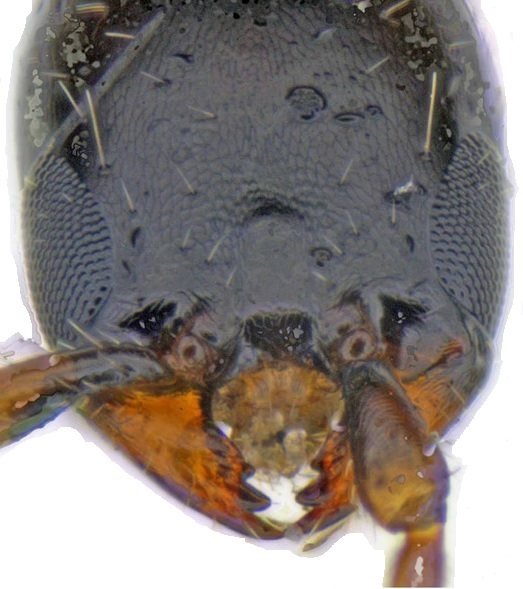
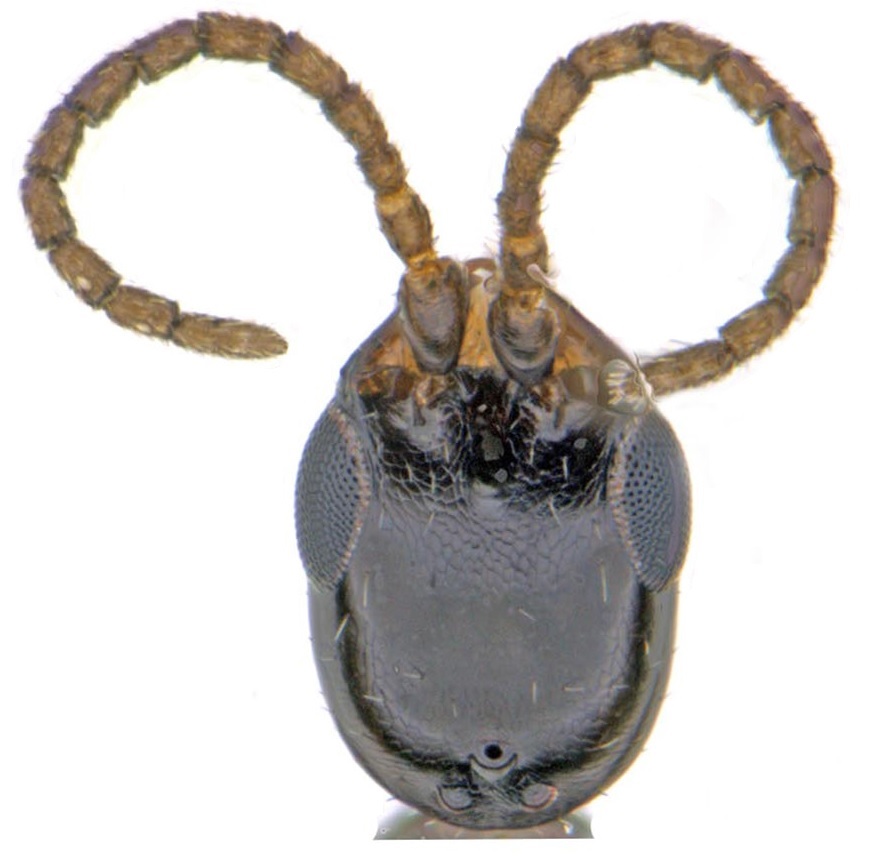 Head: Female (left) and male (right)
Head: Female (left) and male (right)
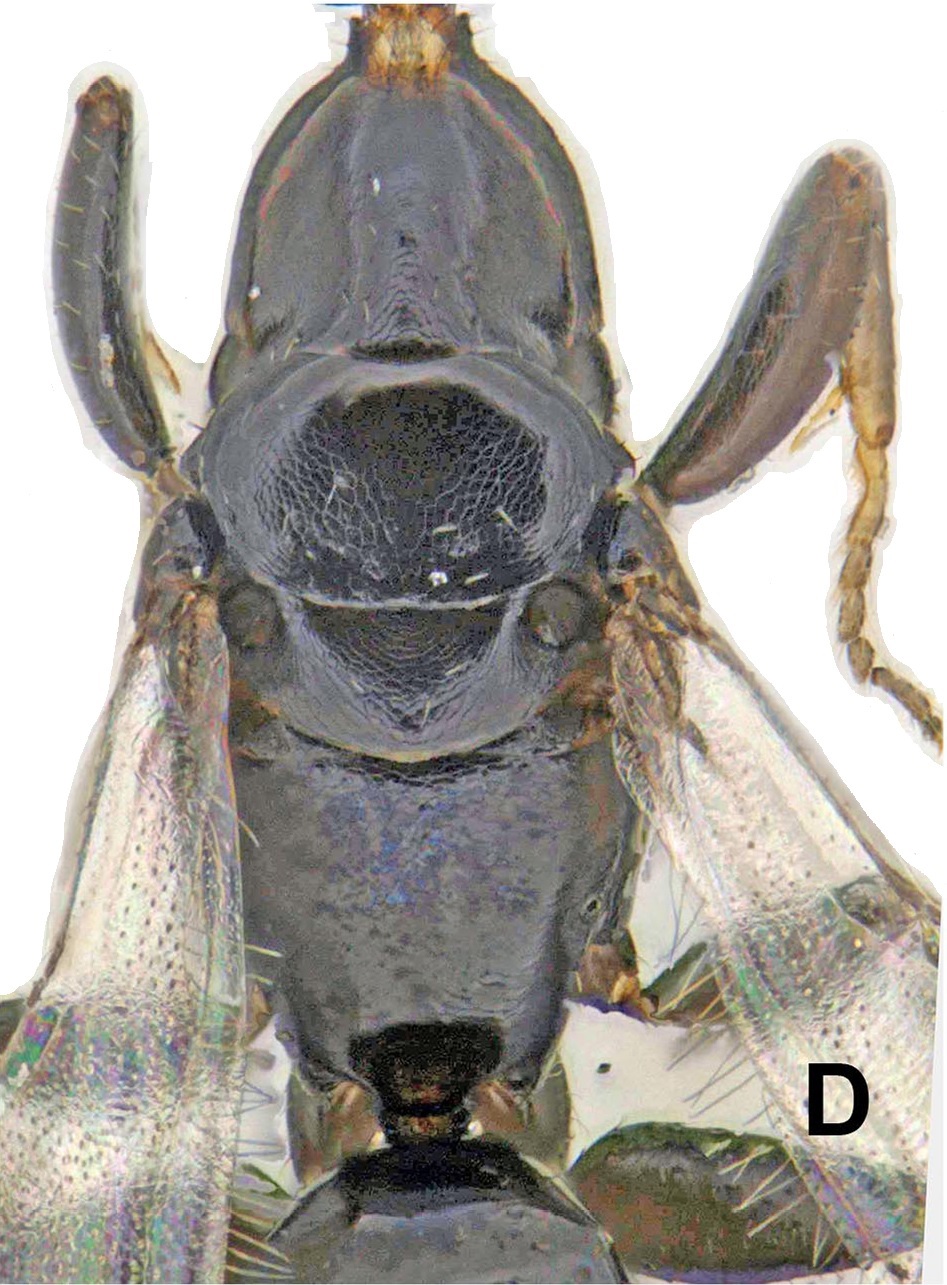 Mesosoma: Female (left) and male (right)
Mesosoma: Female (left) and male (right)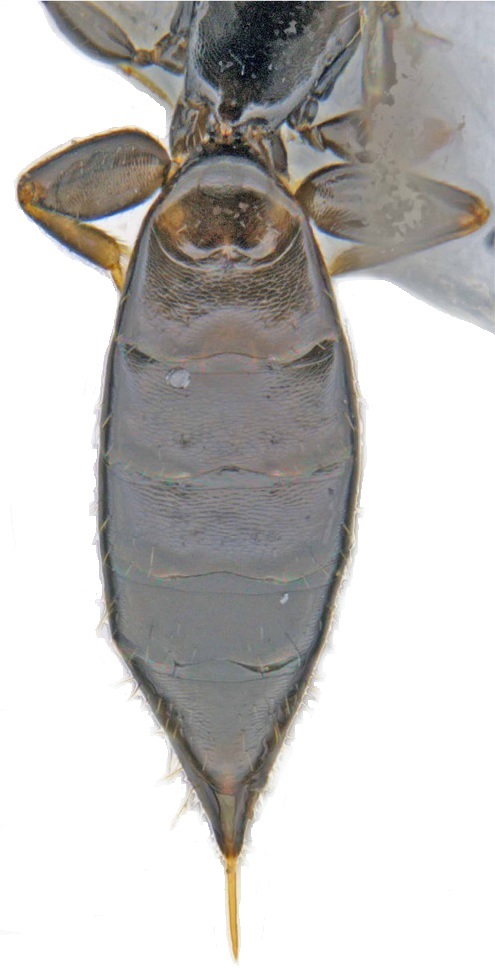
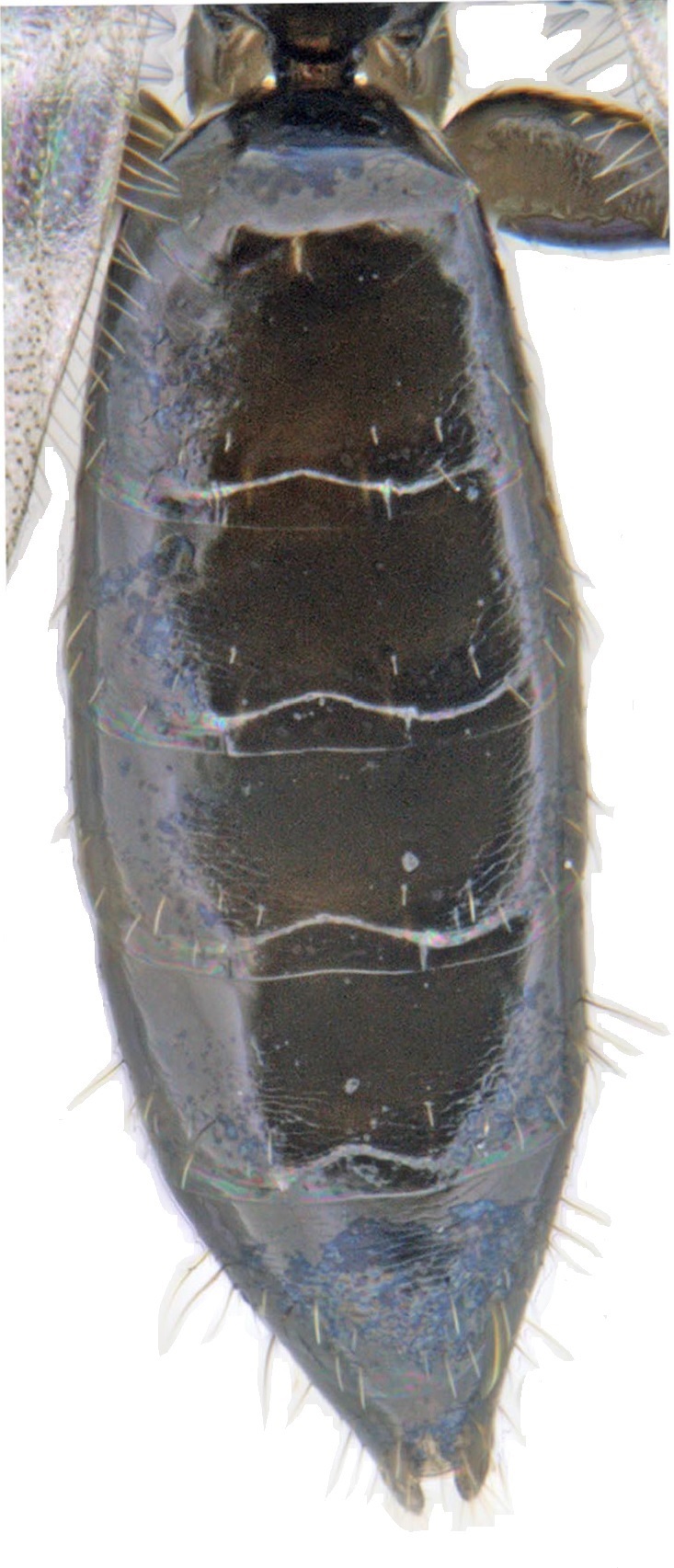 Metasoma: Female (left) and male (right)
Metasoma: Female (left) and male (right)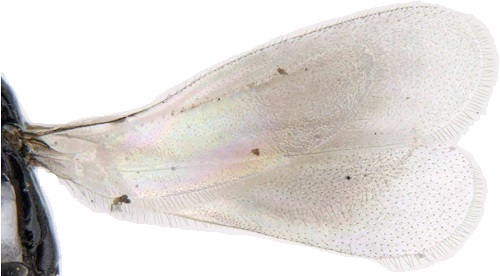
 Wings: Female (left) and male (right)
Wings: Female (left) and male (right)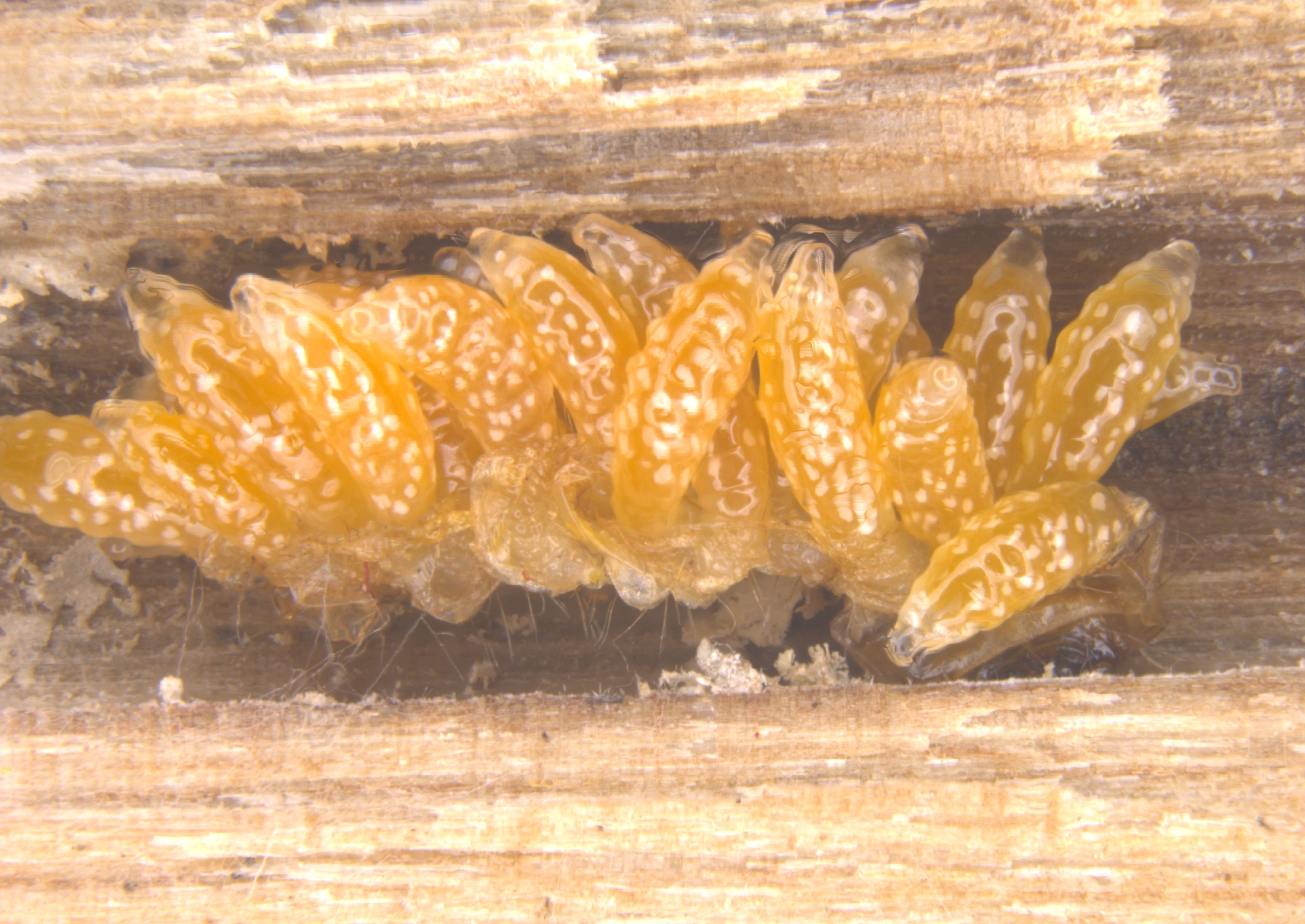

.jpg)
